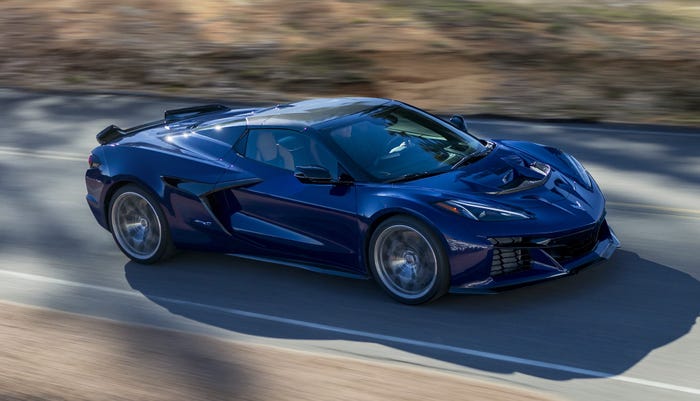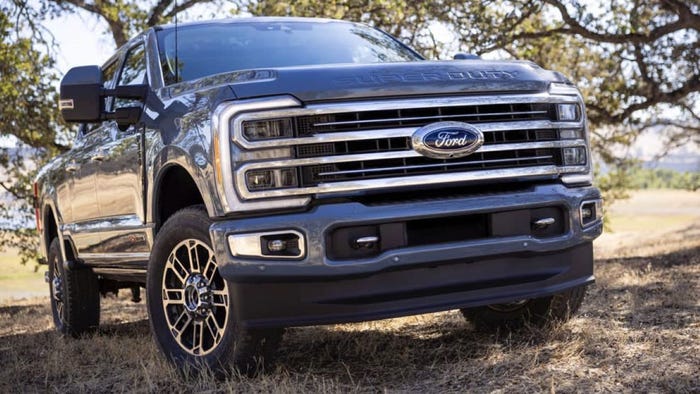Brand Loyalty Is Weak for All Auto Brands – Except Tesla
Among mainstream manufacturers, General Motors fared best in brand loyalty in the first four months of 2023. Among luxury brands, Tesla was the runaway winner in retaining owner loyalty.
_0.jpg?width=1280&auto=webp&quality=95&format=jpg&disable=upscale)
Brand loyalty took a hit in the past few years as consumers failed to find the models they wanted at dealerships. And while inventory is recovering, loyalty is not, according to S&P Global Mobility data.
“The industry is in this funk and has not been able to really start on an upward trend to get back to where it was in 2019,” Tom Libby, S&P Global Mobility’s loyalty solutions and industry analysis associate director, says during a recent webinar.
Brand loyalty measures the likelihood that a household owning a specific brand will buy the same brand when returning to market. Overall, such loyalty plunged in mid-2020 along with days’ supply of vehicles, according to S&P Global Mobility and AUTODATA.
And while days’ supply improved from the low 20s in the first quarter of 2022 to about 33 in May of this year, that is far below the pre-pandemic levels of 54 to 56 days, says Libby.
General Motors, with its plethora of brands, fared best in manufacturer loyalty in the first four months of 2023, says Libby. Stellantis also was able to hang on to customers, but GM did so at a higher rate, he says.
Among imports, Hyundai and Toyota have maintained steady loyalty scores since 2019. “They were better able to deal with the inventory shortage,” says Libby.
Digging deeper, among mainstream brands Ford and Chevrolet led in loyalty in the first four months of 2023. Having many models helps.
“The more broad a portfolio, the more likely a consumer will stay with your brand when they return to market,” he says.
Subaru, despite relatively fewer models, came in third behind Ford and Chevy in brand loyalty. Surprisingly, Toyota dropped to seventh.
“Traditionally, Toyota is neck and neck with Ford and Chevrolet,” says Libby. “In the first four months, Toyota is a disappointment. We will have to see if this is an aberration.”
Migration to a different brand was especially prevalent in the luxury segment, with one exception. “Every brand but Tesla is losing more households than it is keeping,” says Libby.
The Tesla Effect
In the luxury brand segment, in the first four months of the year fewer than half of households bought the same brand when they returned to market. Only Tesla bucked that trend, with 68% of its owners buying another Tesla.
That was true even though Tesla’s last new product launch was the Model Y in 2020, Libby points out.
BMW, Mercedes-Benz and Lexus have been impacted “substantially” by migration to Tesla, says Libby. “If you have a narrow product portfolio it is difficult to have the same range of brand loyalty.”
By the numbers, 7.5% of BMW households migrated to Tesla in 2023 compared to 6.8% in 2022, while 8.9% of Mercedes-Benz households did so compared to 7.8% in 2022. For Lexus, the numbers were 7.2% versus 5.8%.
Migration to Tesla accelerated for most luxury brands in the first four months of 2023 compared to like-2022.
Land Rover was an outlier. It held on to more households, with 4.8% migrating to Tesla this year compared to 6.1% in 2022.
Even mainstream brands lost to Tesla in the first part of this year, when every mainstream brand except Fiat saw accelerated migration to Tesla.
Honda saw one of the biggest overall migration increases, with 6.4% of its households migrating to Tesla in the first four months of 2023 compared to 3.9% last year.
For brands looking for ways to fight the Tesla effect, there is a perhaps surprising possibility: having a buyer finance through a manufacturer’s captive-finance company. The data shows a clear correlation between purchasing a vehicle through a “captive” and buying from the same manufacturer again, says Libby.
General Motors leads in that respect, with 63.8% of households owning a GM-brand vehicle buying another GM brand when they used GM’s captive-finance business. Ford, Hyundai and Toyota follow, all with more than half of their households remaining loyal.
Overall, loyalty data from the first four months shows a huge amount of brand switching is happening, says Libby.
For automakers, that means “you want to be sure you are doing everything you can to retain your loyal customer, (but it is) also a conquest opportunity since there is so much movement going on.”
About the Author(s)
You May Also Like


_(2).jpg?width=700&auto=webp&quality=80&disable=upscale)


